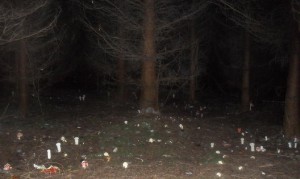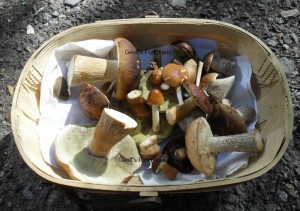There are something like seven times as many non-microscopic species of fungi to be found growing wild in the UK as there are species of non-microscopic plant. This in itself would be enough to seriously challenge any would-be fungi-hunter, but the situation is made far more difficult by the fact that for nearly their entire lives, fungi are invisible. They exist in the form of webs of “hyphae” – microscopic filaments passing through whatever substrate they feed on or in – usually soil, wood or other organic debris. Only when it is time for them to reproduce do these mysterious, ephemeral things called “mushrooms” appear, as if from nowhere. Plants can be found throughout the year – they are considerably easier to identify when in flower, but at least you have the rest of the organism to go by at other times. With fungi, you’re trying to identify something which is literally invisible for most of the time, and you only stand a chance if you happen to find them when they are the equivalent of in flower. Not only that, but a lot of the “flowers” are practically indistinguishable without microscopy or chemical reactions. Hardly surprising, then, that fungi are such difficult things to study.
There are something like four hundred known-to-be-edible species of fungi growing wild in the UK. This number is unlikely to increase by very much, even though it is likely that a great many more species are also edible. Unfortunately, one cannot establish the edibility of a particular species, the edibility of which is currently unknown, by eating it and not being made ill. If only it was that simple! The problem is that quite a few of those species that are known to be poisonous only cause problems after being consumed on multiple occasions. In some extreme cases it is only after they have been consumed for many years that the health problems emerge, and these health problems can include fatalities. In other cases a species can cause serious problems in some individuals but not others, and in still more cases whether or not they cause a problem depends on the weather conditions that year, or the precise location/habitat they have grown in. Put all these factors together and it should be obvious that the only species of fungi that we can be confident are truly safe to eat are those which have been traditionally consumed somewhere in the world for long enough for any of the above problems to have emerged and been noticed (although there may be one or two exceptions to this general rule…)
This website provides only the briefest introduction to some of these edible species, along with a few of the more serious poisonous ones. Hover over the fungi tab to access the drop-down menu.



Fungicide and mushroom close to Japanese a
Yew and oaks
Brown leaves dying